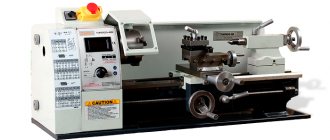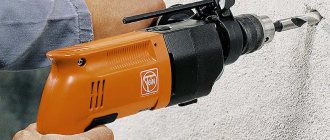How and what to fill and how to work with an oil glass cutter?
The oil glass cutter has relatively recently appeared in the arsenal of glass cutters. In principle, this is the same roller glass cutter, equipped with the function of automatically supplying lubricant to the cutting element. The oil reservoir is combined with the handle of the glass cutter, and the liquid flows through the wick directly to the roller, simultaneously lubricating its axis.
This system makes it possible to reduce friction in the roller axis, ensuring its smooth movement, and binds the smallest particles of glass that are formed during the cutting process.
In order for an oil glass cutter to work correctly, it must be filled with special oil. This oil has one important feature - it is washed off with water!, and in addition, it does not flow from the roller axis and the roller itself and does not spread on the glass.
Of course, instead of special oil, you can use other types of oils, including spindle oil, as long as it has fluidity that can be freely supplied through the wick to the cutting element. You can use turpentine, kerosene, white spirit, etc.
But such a replacement is extremely undesirable because:
firstly, as mentioned above, all these substances are difficult to remove from glass. You will have to allocate additional time and money to purchase special liquids to clean it from grease stains.
secondly, the use of such substitutes will render your instrument inoperable in a very short time.
Special oils used for oil glass cutters:
Silberschnitt, Milli M2000, T-3133, BOHLE, EnviroGOLD, Novacan Cutter Oil, etc.
Oil is poured into the reservoir handle to 2/3 of the full volume. To ensure that the oil flows evenly and correctly during operation, its flow is regulated using a cap. By turning the cap in one direction or the other, you ensure that you get an even and wet strip on the glass. At the end of the work, if a long break is not expected, the oil can be left in the glass cutter, otherwise it is better to drain the oil.
The basic techniques for cutting and preparing material when working with an oil glass cutter are the same as with a diamond one. (See here, on RemOtvet).
And finally, a short video on the topic.
An oil glass cutter is not much more difficult to use than a regular roller cutter. The principles of handling them are the same, with the only difference being that an oil glass cutter (as the name implies) also has a supply of lubricating fluid to the cutting site.
What to fuel. The most budget-friendly option for a lubricant for an oil glass cutter is motor oil diluted with regular kerosene in a one-to-one ratio. Anyone can make this kind of lube. Oil with kerosene has a lower viscosity due to which it penetrates the roller and at the same time does not lack lubricating properties. Engine oil with kerosene does not affect the life of the roller in any way, nor does it affect the quality of the cut. The only disadvantage of such a cocktail is that it is more difficult to wash with water.
Special oils for oil glass cutters are no better in their lubricating properties than oil diluted with kerosene, but they are several times more expensive. Their undeniable advantage is that they are water-soluble and wash off well, because they consist of heavy esters with an oily consistency. If you nevertheless made a choice in favor of a special product for an oil glass cutter, then T-3133 oil, made in Russia, is quite suitable as it. The price for two hundred grams is no more than 250 rubles. For a home craftsman, this jar will last for ten years. It washes off without leaving streaks. From abroad there is a good liquid SOGEVER 1000 FG. This one does not require rinsing at all, it evaporates completely on its own. True, it costs about five thousand per liter. I didn't see it in a small container. Mainly used for automatic glass cutting and critical glass contour cutting (wave cutting) work.
How to work? An oil glass cutter, unlike a roller (dry) or diamond cutter, requires a minimum of preparatory work - just pour lubricating fluid into the handle of the tool. The rules for cutting with an oil glass cutter are the same as for others - the glass must be clean, laid on a flat, hard surface. Before the end of the cut, release the pressure. You can’t make one cut several times—you’ll ruin the roller. Glass with a thickness of more than 5 millimeters must be cut on both sides, two cuts opposite each other.
How to cut glass with an oil or diamond glass cutter
Those. the principles and cutting techniques are almost the same, but the glass does not want to break. Therefore, in order to ensure a reliable cut, a completely different glass cutter is needed. This is Silberschnidt-2000 German
It has a stationary head body, inside of which there is a 360′ rotating carriage with a roller:
There is a completely different sharpening angle of the roller, a special two-valve oil supply system to the head, and additional equipment with a special handle attachment to add more force when pressing...
Price: $70
The tongs for breaking glass are also special here.
They are no longer as flimsy as the Japanese ones. Made from milled metal, they weigh almost 1.5 kg! But they also break glass much better. The truth is, their price is already an order of magnitude higher, or at least two times higher. Price: $400
To confidently cut large pieces of thick glass, a special carriage is used, which fits onto a ruler and slides along it on bearings. It provides confident, uniform guidance of the glass cutter and good pressure:
Price about $600
For obviously reliable breaking of thick glass, a special “strike” is used.
It is used to tap the glass along the cut line on the reverse side, which leads to the appearance of a through crack at the cut site:
It has adjustable impact force, making it suitable for different glass thicknesses.
Price: $800
If you have to cut out complex shapes, especially “inside” glass, then you will need a special press.
By moving it along the cut line, you turn the screw to slowly and carefully move the crack creeping along the cut line, thereby avoiding the danger that it will go to the side:
Price about $800
Now a little about rulers, templates, etc.:
For ease of cutting, there are special rulers with suction cups that attach the ruler to the glass. Well, we won’t talk about them - everything is clear here. I will dwell on some devices used for more complex things. However, it is worth mentioning the precision squares and sliding template frames for mass cutting of identical parts:
| Price about $130 - 200 | Price about $150 |
Template for cutting out ovals. Use special ring bits of different sizes on the glass cutter to cut out ovals of different diameters.
Price: about $170
Or a more complex device that provides a wider range:
Price: about $900
A compass device for cutting out circles and semicircles. It has a suction cup, which is fixed in the center of the intended circle, and millimeter markings on the rail along which the glass cutter with a clamp runs.
Price: about $150
If you made a mistake somewhere and the thick glass broke off and left an ugly “fang”, or you need to cut out an internal corner, but it is not possible to do this with a glass cutter, a glass sawing machine (like machines for cutting metal) will help you:
It has a diamond-coated disk and a water tank (any glass processing, including sawing, requires abundant cooling of the surface being processed and the working surface of the tool).
Price: $300-400
If the “fang” is relatively small, or there is no special machine, or you just need to break off a small piece of glass, then there are special “pliers” designed specifically for such purposes:
Price: about $100
Now a little about glass processing, namely, about drilling and grinding edges:
Glass is drilled using tubular drills with diamond coating on the edges:
This is best done on a machine. Having drilled to approximately the middle of the thickness, the glass is drilled from the back side. This avoids chipping when drilling through. A constant water supply is required. Large-diameter holes are drilled with a special expandable ballerina drill.
Prices for drills vary enormously, so I won’t list them.
Finally, for rough grinding of glass edges, you can use surface grinders with an abrasive belt and machines with soft abrasive wheels:
That's all for now. More complete information about all the tools used for manual cutting and processing of glass can be found on the website
Oil glass cutter
An oil glass cutter is one of the most popular tools for cutting glass. This is explained by its ease of learning and use, as well as its low cost. This type occupies a middle position between the most economical, but limited in cutting capabilities, roller glass cutters and the more expensive and difficult to operate, but professional diamond ones. Its power is enough for home use and small industries, which makes it the best choice when purchasing in the vast majority of cases.
Oil glass cutter device
In its design, an oil glass cutter is similar to a conventional roller cutter and, in fact, this is only the next step in the evolution of this device for cutting glass.
The working body is a disk made of tungsten or cobalt alloy. Such chemical compounds are characterized by increased hardness and are widely used in the creation of cutting tools.
The roller is fixed on a metal holder, the connection is designed so that it can rotate freely around its center, but at the same time, deviations to the sides during movement are minimal, and an even, neat cut remains behind the tool on the glass. The working head of the oil glass cutter is made monolithic, so that when the service life of the cutting disk is exhausted, it is completely replaced. The standard package includes two tips; the rollers on them differ in sharpening angle: 135º and 150º. The first is suitable for cutting glass up to 10 mm thick, the second - for thicker ones.
The handle of the oil glass cutter contains a built-in container for lubricant and a mechanism for supplying it to the working head. This device differs significantly from dry roller cutters. The liquid entering the working area reduces the friction forces arising during operation, increasing the service life and reducing the formation of microcracks.
Pros and cons of oil glass cutter
The design is distinguished by the presence of a reservoir on its handle into which oil is poured. A wick extends from the reservoir to the cutting head. It automatically supplies oil to the surface of the work surface during cutting. Oil performs several functions simultaneously:
- reduces the level of friction;
- increases the shelf life of the cutting head; The movement of the device on the glass is simplified.
The popularity of the oil device is due to the advantages inherent in it. For example:
- Ease of use.
- The working life reaches 5 thousand linear meters. m. without the need for re-sharpening.
- Ergonomic shape.
In addition to the advantages, this type of device also has some disadvantages. Among them, the most significant is that there is a need to periodically add oil to the reservoir. The lubricant must be of high quality. Otherwise, the cutting quality will decrease.
How to choose an oil glass cutter
When choosing an oil glass cutter, pay attention to the following things:
- The tool purchased must be suitable for the intended job. Oil glass cutters cut glass up to 20 mm thick; thicker sheets are processed on special laser or hydraulic machines.
- The cutting roller should sit securely in the holder, the gap between them should be minimal. This design will reduce the movement of the cutter to the sides when cutting.
- An important point is the ease of grip, which is ensured by the corrugated surface of the handle and the polymer coating.
A normal requirement would be to ask the seller to demonstrate the operation of the tool. During the test, make sure that the cut line is thin and even. And also during the cutting process there should be no extraneous squeaking.
Which glass cutter to choose for glass. How to choose a glass cutter for your home
In almost every household, sooner or later there is a need to cut glass or a mirror, and if you only need to make a couple of cuts, then there is no point in inviting a specialist (and he will not do such a small volume). That’s why it’s better to choose and buy a high-quality glass cutter once. And I will tell you how to do this below.
What types of glass cutters are there?
Today you can find four types of glass cutters on sale, each of which is slightly different in characteristics:
1. Diamond glass cutter. It is a frame with a diamond stone inserted there. The head with the diamond is attached to a wooden or plastic handle. The edge of a diamond inserted into a glass cutter is capable of cutting glass up to 1 cm thick, and when the edge becomes dull, the diamond is turned with another edge.
There are two types of diamonds installed on glass cutters: with a curved cutting edge - such a glass cutter is considered an amateur one, and can be used by a person without experience. The second version of a diamond with a tetrahedral pyramid is a professional tool, and it will be difficult for a beginner to use it.
When choosing a diamond glass cutter, you need to remember that diamond can be synthetic or natural; a tool with synthetic diamond is cheaper, however, it can only cut glass up to 5 mm thick. Otherwise, “synthetic” is not inferior to “natural”.
2. The roller glass cutter has established itself as an inexpensive and fairly reliable tool, capable of cutting glass with a thickness of 1 to 5 mm; the power reserve of the roller glass cutter is more than 35 meters of glass.
The roller, made of an alloy of tungsten and cobalt, is mounted on a metal head, which, in turn, is mounted on a wooden or plastic handle. The glass cutter comes with one, three or six rollers, which can easily be swapped as they become dull.
3. Oil glass cutter - a modern glass cutter equipped with a special container with oil located in the handle of the tool.
Oil is supplied automatically during the glass cutting process, allowing the glass cutter roller to move smoothly and evenly across the surface, which allows you to obtain very even cuts and, by reducing friction, increase the life of the tool. In addition, an oil glass cutter can easily cope with glass up to 20 mm thick. The service life of the oil glass cutter roller is designed for more than 5000 meters.
Oil glass cutters come in rotating and fixed versions. The first option is great for pattern cutting of glass, where smooth lines are needed.
4. The glass cutter compass is not widely used, since it is not often necessary to cut circles or ovals on glass (most often it is not necessary at all). A glass-cutter compass consists of a suction cup, with which the tool is attached to the glass, a scale, with which the desired diameter of the circle is set, and an oil glass cutter.
As you can see, choosing a glass cutter is not as difficult as it might seem at first glance.
Friends! Subscribe and like, there will be many more interesting things!
What kind of oil to pour into a glass cutter
Kerosene, white spirit, turpentine, Vaseline solution and other liquids can be used as a lubricant for a glass cutter. However, their use is associated with additional inconveniences: strong odor, greasy marks on the glass surface, and reduced service life of the instrument. Oils with high viscosity, such as machine oil, will cause the greatest harm to the glass cutter, so their use is highly undesirable.
Therefore, it would be more correct to use compounds specially designed for oil-based glass cutters. Here are some names: T-3133, Milli M2000, BOHLE, Novacan Cutter Oil, Silberschnitt, Acecut 5503. Glass cutter fluid has optimal fluidity and does not create puddles on the glass.
Another important advantage is that they are washed off without residue with plain water. Due to its viscosity, glass cutter oil is supplied to the working area at the required speed.
Preparing for work
Cutting glass with a glass cutter is a responsible task that requires some preparation. It is necessary to prepare the place where cutting will be carried out, and the material itself that will be subjected to it:
- The surface on which the sheet of glass should lie must be perfectly flat. During cutting, significant pressure is applied to the glass. If somewhere there is an unevenness, a dip or a difference in height, the glass may simply crack in an unpredictable place, and the crack will be branched and ruin the entire workpiece.
- It is better not to place glass directly on a metal or wooden surface, as they may scratch each other, and the glass may slip or move. Lay a piece of fabric, thick film or rubber - this will soften the surface and improve grip.
- The glass surface must be clean. For minor stains, rinse with water and wipe dry. Use paper towels or old newspapers for this so as not to leave lint on the glass. Remove heavy stains with kerosene, white spirit or acetone.
How to use an oil glass cutter
Before starting work, the workplace is set up. The cutting table is large and level. The surface of the countertop is cleaned with a brush, throwing down all existing debris, after which it is covered with a cloth to protect it. Place a box for glass scraps in a convenient place on the floor. Only after this the glass sheet is placed on the table.
The glass is wiped with a rag to remove dust; sometimes the workpiece has to be washed, after which it is wiped. Next comes the degreasing process so that the glass cutter does not slip during operation. A suitable organic solvent is used. Then you need to wait; only completely dry workpieces are allowed to work.
At this time, you can thread your glass cutter. Oil is poured into the handle to approximately 2/3 of the height of the tank. The liquid flow rate is adjusted by turning the cap. For such debugging, they take an unnecessary piece of glass and strive to obtain the highest quality cut line. In order for the liquid to flow into the working area, pressure is applied to the tool from above.
To work, you will additionally need a guide ruler and a glass-graph for marking. The sheet of glass is ruled, and plywood patterns are prepared in advance to outline complex shapes. There are two important points to consider during the marking and cutting process:
- You should always work with a smooth surface; when cutting glass with a pattern, place it with the back side up.
- The cutting line and the edge of the guide ruler do not coincide by several millimeters. The exact distance between them depends on the tool model. For oil glass cutters it is usually 1–2 mm.
Experienced craftsmen often resort to an alternative marking method, where they mark the surface of a table or a fiberboard placed under glass. Transparent material does not block the markings from view.
To cut glass, the tool is placed on the edge of the sheet farthest from itself at an angle of about 90º to its surface. The glass cutter is lightly pressed down from above and guided towards you along the guide. The angle of the tool in relation to the glass is kept constant so that the cutting line is even. The operator's pressure becomes slightly less at the beginning and end of the cut at a distance of approximately 5 mm from the edge of the sheet. As a result, the operator should get a thin whitish stripe along the entire length.
Next comes the stage that causes the greatest difficulties for inexperienced craftsmen, this is breaking off part of the glass sheet. A small rod is placed under the cutting line, it can be a knitting needle, a match, a glass cutter handle... Then the operator presses on top of both halves of the glass with his hands, as a result of which the sheet breaks. This can be quite difficult to do due to insufficient cutting depth. Then the glass is lifted and lightly tapped along the marked line with the same glass cutter or a hammer in a rubber cage. At this moment, the workpiece is held so that not a single part of it falls to the floor when disconnected. There is an alternative way. One side of the glass is hung over the edge of the table, setting the cutting line parallel to the edge of the tabletop at a distance of about 5 mm, and then this part of the sheet is sharply pulled down. When the required dimensions have been obtained, the edge of the glass along the entire perimeter is sanded with sandpaper or a diamond-coated sponge; those who want to speed up the process can take a drill with a grinding attachment.
Instructions for use of oil glass cutter
To cut glass, you can use an oil glass cutter, the instructions for use of which are not too complicated. The device can be used not only by experts, but also by beginners. The device has enough functions to perform high-quality, accurate and fast work. The oil glass cutter has an automatic lubrication function, which makes using it much more comfortable. The oil is poured into a compact reservoir, which is located in the handle of the device. The lubricating solution is supplied to the blade through a special wick, i.e. the equipment operates on the simplest principle of a ballpoint pen. It’s comfortable to hold the glass cutter in your hands; it won’t take long to get used to the device.
An oil glass cutter allows you to accurately and quickly cut glass, mirrors or ceramic tiles.
Using an oil glass cutter allows you to ensure the following conditions:
- Glass particles bind together during operation, i.e. the likelihood of injury is reduced many times.
- The movement of the device is smooth and easy; great effort is no longer required with constant pressure control, which greatly facilitates the work.
- The service life of this device is much longer than others. The blades retain their sharpness, which has a positive effect when it is necessary to carry out a significant amount of cutting.
- The friction of the roller during cutting is reduced, this prolongs its service life, the same condition is met for the side surfaces of the tool.
Cutting a mirror using a moving ruler and a glass cutter.
The cost of an oil glass cutter is higher than other devices for cutting glass, but the convenience and service life are much higher. The cutting head retains its properties for a long time; it lasts for approximately 5,000 meters of cutting. This is a guaranteed quantity, after which the head can be changed if the quality of work has deteriorated. When purchasing an oil glass cutter, you must simultaneously purchase a special oil to fill into the tank. Fluid consumption is economical, but you should still have some supply.
The tool has gained significant popularity today; it is intended not only for professionals, but also for beginners; working with the tool is easy. Its cost is not the lowest, but diamond devices are also not cheap. For cutting glass, where precision is of utmost importance, an oil cutter will do a much better job.
Types of glass cutters.
An oil glass cutter differs from others in that it has the ability to automatically supply lubricant to the working surface, i.e. there is no need to constantly wet the sheet. A small reservoir is built into the equipment body; oil is poured into it. A special valve and screw ensure an even supply of lubricant to make work easier, improve quality and extend the life of the roller.
Instructions for use are simple. It consists of properly filling the oil and preparing the equipment and sheet of glass for use. If you have no experience, it is recommended to practice on a small piece before starting cutting. This will make it possible to determine the speed and pressure on the device. Cutting should be smooth and uniform.
Return to contents
An oil glass cutter includes such elements as:
- A cutting head that has a round shape. It is designed for cutting glass up to 6 mm thick. There are replaceable heads that can be used while working.
- Two-level oil supply valve.
- A special ergonomic handle, inside of which the oil reservoir is located.
Today you can use the following models of glass cutter:
The oil glass cutter head has increased strength and lasts for a long time.
- “Standard” tool, the sharpening angle of the cutting roller is 145°. Can cut glass up to 6 mm thick.
- A “master” tool with a sharpening angle of 155°. Used for figure cutting. The sheet thickness can be 6-12 mm.
- Power tool with a sharpening angle of 158°. It can be used to process thick sheets up to 12 mm thick.
Scheme of work:
- It is necessary to fill the oil glass cutter reservoir with lubricant. Just carefully open the special ventilation screw and fill in the oil. It is located at the end of the glass cutter handle.
- Only special oil should be used for work; under no circumstances should you use liquids that are not intended for glass cutting tools. Not only will they not provide the required quality, but they will also lead to valve clogging.
- Once the valve is opened, air will enter and oil will begin to flow onto the blade.
- If you need to use a glass cutter without oil supply, it is best to tighten this screw tightly.
- Lubricating fluid enters the blade when pressure is applied to the valve. It is important to regulate the flow so that the liquid flows smoothly and evenly onto the work surface.
- When cutting, maintain a distance of 6 mm from the working cutting roller.
If necessary, the oil tool roller can be rotated 360°, resulting in even angled cuts. It is recommended to use special templates for work, which makes the process much easier and makes it of higher quality.
Return to contents
Glass cutting technology.
Before you start cutting glass, you need to be properly prepared. First, the sharpness of the blade is checked, then lubricating oil is poured into the handle. After this, you should prepare a workplace where cutting will be carried out. It is best to carry out work on a large, flat table, from which all unnecessary items are removed. The dimensions of the tabletop must be larger than the sheet of glass. Minimum gaps - 50-100 mm. In addition, you should immediately decide where the finished cut sheets and scraps, split and defective parts will be stored. It is best to place a sheet of chipboard on the surface of the table; it is recommended to cover it with a piece of soft, clean cloth.
Then prepare the tools that are necessary for the job:
- oil glass cutter;
- measuring tool;
- patterns for cutting.
You first need to test the device on a small piece of glass to determine whether the blade needs to be replaced. The quality of work will entirely depend on this stage. Measurements are taken for windows or other openings where glass will be inserted. The markings are applied to the glass surface with a special marker. Care in this matter is also important, especially if the cutting process is performed for stained glass windows, furniture, inserts for windows and doors, and aquariums.
Return to contents
Next is the cutting. The instructions here are not too complicated, but require compliance with all stages of the work. First you need to cut the glass; correct marking ensures that there will be much less waste. To make markings, you can use a marker or a special glassograph.
The cross handle is necessary for the convenience of working with an oil glass cutter.
Using a template and a ruler, you need to determine the first and last points for cutting. The ruler is placed on the surface, after which the cut should be carefully made, the surface will be moistened with oil from the reservoir. The process is simple at first glance, but requires maximum concentration. It is important to be careful when working on thin glass. With the slightest mistake it can easily break.
The ruler cannot be removed during cutting; it must be pressed against the surface. The glass cutter should be used to cut smoothly and carefully, without stopping. The force and speed of movement cannot be changed. This rule is simple and at the same time difficult for a beginner.
If you don’t succeed the first time or have no experience, then it’s better to practice first.
You need to take a piece of material that will no longer be suitable for work. Apply various types of markings on it, for example, straight, broken and wavy lines. Using a glass cutter, determine the position of your hand, the optimal speed and force required for work.
When making a cut, you cannot put too much pressure on the surface, otherwise cracks will appear and the material consumption will increase. An oil glass cutter is also used when it is necessary to make a chip. The sheet is placed on the edge of the worktop, after which a marking cut is made, and a piece is broken off with a sharp and precise movement. If the glass thickness is 3 mm or more, an additional block must be placed along the cutting line. Use a glass cutter to gently tap from below the surface. This causes a crack to appear, i.e. It will be easier to break off a piece.
Summarize. Working with an oil glass cutter is not difficult, but it requires skill. Liquid is poured into a special reservoir, after which the working surface is marked. Cutting should be smooth, speed and pressure cannot be changed, as cracks and unnecessary chips may appear.
Different types of glass and rules for working with them
Cutting the most common silicate glass up to 10 mm thick is usually not difficult. However, the material called glass has several variations in its chemical composition, production methods and design of the sheet itself. This is certainly worth taking into account when working.
- Triplex. Consists of several layers of glass alternating with a protective film. The material is used where there is a high probability of mechanical damage, and the scattering of fragments is unacceptable, for example in cars. At home, cutting triplex is difficult, especially if it contains more than one film inside.
- Strained glass. The material produced using this technology is stronger and harder, so working with it at home should be avoided. If the specified properties for glass are necessary, you can initially cut standard silicate glass and then send it for tempering.
- Plexiglas and acrylic. A fairly soft material that any glass cutter can handle, as well as files, knives, etc. Plexiglas is lightweight and has good impact resistance, in other words, it does not break.
- Glass with grooves and patterns. One side of this glass has a pattern in the form of embossing or a pattern. It is most often used to create decorative interior elements. Glass is cut from the smooth side. The standard thickness is 4 mm, patterned glass is easy to process.
- Mirror. There is no fundamental difference in processing from standard glass, except that it needs to be cut from the side where there is no reflective film.
How to cut a circle?
A glass circle is a very beautiful figure that can be used in decoration.
Sometimes it is necessary to cover a dormer window in the attic with a glass circle.
For circular cutting, special devices have been invented, for example, a circular glass cutter.
This device consists of a strong suction cup with a hinge, a metal strip with divisions, and a glass cutter attached to this strip. This is usually a roller glass cutter, most often with an oil reservoir. It differs from other glass cutters in that it is much shorter. The oil container, if there is one, is hidden in a round handle, which is grasped during operation. How to cut a circle at home:
- The main thing in cutting a circle is to make a straight line, equidistant from the center. Attach the suction cup of the radius glass cutter to the imaginary center of the future circle.
- Next, you need to move the glass cutter along the rail to the required distance. This distance on the scale is the radius of the circle to be obtained.
- Having fixed the glass cutter on the rail, begin to describe a circle with a medium-speed movement. Maintain uniform pressure. If everything is set correctly, the end of the cutting line will coincide with the beginning.
- After drawing a circle on the glass with a glass cutter, arm yourself with a regular glass cutter for rectilinear figures and a ruler and make radial cuts on the outside of the circle. This is necessary in order to carefully break off the excess glass from the resulting circle in pieces.
- If you do not need a glass circle, but a round hole in the window, the cuts need to be made inside the circle. Make them in the shape of sectors, and then tap each one with light blows from below. The first one will fall out on its own, the rest can be broken by sticking your hand into an empty sector.
Safety precautions when working
The greatest dangers when cutting are the sharp edges of glass sheets and microscopic fragments formed during the work. Inexperienced craftsmen have a high risk of injury and bruises.
To prevent accidents, all work is carried out wearing protective glasses and gloves. Compliance with the established cutting technology helps to avoid accidental sheet bending and chipping. The basic rule here is that the glass cutter always passes along the intended line only once; if a cutting defect is detected, the operator retreats a short distance and makes a new attempt. It is customary for two people to work with large sheets; this greatly simplifies the transfer of fluid and its breaking; in production, workers learn to act harmoniously for greater efficiency and reduce the risk of injury.
Safety precautions
Glass is a very fragile material, and therefore especially dangerous.
When glass cracks, the fragments have several sharp edges.
Large fragments easily cut through the skin and muscle mass.
Small fragments are invisible to the eye due to their transparency, but can get stuck in soft tissues and form suppurations. Here are the basic rules that must be followed when cutting glass using a glass cutter:
- You can only work with glass wearing safety glasses. During operation, small particles can enter the cornea of the eye, cause pain and even lead to loss of vision. If a piece of glass does get into your eyes, do not try to remove it yourself.
- It is advisable to wear gloves when cutting glass. Many masters neglect these requirements, but in vain. After all, the sharp edge of glass easily cuts through soft materials. It's better if it cuts through the glove than through the skin. If you feel that cloth gloves slip on glass or reduce sensitivity, use products with rubber coating on the fingers.
After the workpiece is cut, carefully clean the work area. It is best to combine vacuuming with wet cleaning. It is better to recycle a rag or rags that were used to wash floors and a table or workbench.
Features of using an oil glass cutter
An oil glass cutter has several differences from a roller cutter and a diamond cutter, some of which can be attributed to advantages, and some to disadvantages.
- When the cutting element interacts with the material, fewer microcracks and glass dust appear.
- This type of tool can cut more than 5000 m of glass. With careful handling and regular oil changes, the service life increases even more.
- Working with an oil glass cutter requires less physical effort from the operator, which, combined with a long service life, makes it more suitable for constant work.
- Thanks to lubrication, the quality of the cut improves.
- On average, cheaper than models with a diamond cutter.
- Cuts glass up to 20 mm thick.
- All people quickly master the oil glass cutter; it is much easier for them to work than a diamond glass cutter.
- Constantly consumes lubricant. Additional time is taken by pouring liquid into the pen at the beginning and draining it after completion of work.
- The design of the glass cutter head does not allow separate replacement of the cutting discs.
Tips for cutting glass
Experienced craftsmen know how to get a high-quality cut, complete the job with a minimum of waste, etc. And so that beginners make fewer mistakes, we have prepared a small list of recommendations for working with a glass cutter:
- If the mark left by the tool is too wide and there is a lot of dust around the edges, you need to apply less pressure on the glass cutter.
- When breaking glass, it is better to take the unnecessary part over the edge of the table, so that it will break if the operator does not hold it.
- If the glass is thicker than the glass cutter can cut, then cuts can be made on both sides. The main thing is to carefully turn the workpiece over before the second approach and try to ensure that both cuts coincide as much as possible.
- Narrow strips are broken off using pliers.
- After marking the cutting of the glass sheet, it is checked for compliance with the dimensions.
- When it is necessary to cut out a complex shape, the prepared template is glued to the surface of the sheet with wax so that it does not move out.
- The hole in the glass is made with hardened drills. If you don’t have one at hand, you can make it yourself. To do this, the tip of the drill is heated white-hot over an open fire and stuck into the sealing wax. When the resinous substance stops melting, the drill is pulled out and moistened with turpentine. They work with a hand drill, periodically wetting the drill with water or the same turpentine.
- You should not immediately take on figure cutting and complex materials. To begin with, a beginner must gain experience cutting straight on ordinary silicate glass.
- The choice of cutting method depends on the task at hand; besides glass cutters, there are other options and sometimes their use is more effective.
Oil-based models of glass cutters are the most versatile. The increased acquisition costs compared to a simple roller tool are more than offset by ease of use and increased service life.
Measure seven times - prepare the table and glass
Working with glass is easy if you follow simple rules. If you have never cut glass before, first prepare your work surface - it should be absolutely flat and not allow any vibrations. An ordinary work table cannot always be level - it has probably often been exposed to moisture, it has been knocked on with something more than once... A surface made of ordinary wood-fiber board, which is used in furniture production, is convenient for working with glass. Such a slab, placed on the table, will smooth out all its unevenness.
Before using an oil glass cutter, prepare the glass. If it is new, it will be enough to wipe it thoroughly with a rag so that not a speck of dust remains. Old glass needs to be washed - over the course of its service, it becomes covered with layers of dust and soot that cannot be wiped off with a regular rag. To quickly dry glass, use a time-tested and popular method - crumple up an old newspaper and wipe the surface with it; humanity has not yet come up with a better way to wipe and dry glass well!
After washing, it would not be superfluous to degrease the surface - for this you can use ordinary alcohol or turpentine. After this procedure, let the material dry. Of course, you need to wash and dry it indoors - outside it will quickly become covered with a new layer of dust, while our task is not to leave a single speck of dust in the path of the glass cutter, because the more obstacles it has, the faster the tool will become unusable.
Experienced craftsmen do not use auxiliary rulers at all, but such a steady hand takes years to develop. But at the same time, professionals draw the table itself - the glass is transparent, and you just need to touch it to see where you need to draw the line. This experience will be useful for you too. Draw one thick, straight line on the table or on the surface of the fiberboard. Then mark the glass using the same glass cutter, drawing two small lines in the places where the cutting line should begin and end.
Place the glass on the table so that the marks are parallel to the line drawn on the table, at a distance of 2-4 mm. This distance must be taken into account, because it is not the cutting element itself that will be attached to the guide rail or ruler, but the side parts of the head. Don't forget to check the evenness of the corners of the glass sheet using a protractor. Press the ruler firmly against the glass, check if it moves from side to side, and only then start cutting.
Which glass cutter is better, a roller cutter or an oil cutter?
Some of the most affordable glass cutters are oil cutters and regular roller cutters. These glass cutters are quite suitable for household needs and they are very popular due to their low cost. Their price category is approximately the same and ranges from 200 to 300 rubles.
Last time I told you in detail how to cut glass correctly
, today we will discuss
which glass cutter is better, oil or roller
, considering their advantages and disadvantages. This article, first of all, will be useful for those who are not involved in professional cutting and, one might say, will be holding a glass cutter in their hands for the first time. But perhaps people with experience will also learn something useful for themselves.
First, let's look at the difference between a roller glass cutter and an oil glass cutter. And let's start with the roller.
Regular roller glass cutter
has a simple design: a plastic or wooden handle, a metal part with grooves that are used to break glass, and the main element - a roller (disk). These glass cutters can have up to 6 rollers. When one roller becomes dull, it is easy to replace it with another by unscrewing the drum. The resource of one cutting element is from 500 to 1000 m.
It was with this glass cutter that I began to master cutting glass and, to put it mildly, it was not an easy task, but more on that later.
Oil glass cutter
- This is a more improved version of the regular roller glass cutter. Its difference is that it has a container of oil, which continuously lubricates the cutting element (disk) during cutting. Instead of oil, you can also pour kerosene into the glass cutter. This lubrication system provides a number of advantages over a conventional roller glass cutter, which we will discuss below. The service life of the roller for an oil glass cutter is from 3 to 5 km.
And so, we have looked at the main differences between an oil glass cutter and a roller one, now let’s move on to the advantages and disadvantages
.
Disadvantages of a conventional roller glass cutter.
When cutting glass with a roller glass cutter, considerable force must be applied. The glass cutter should be held perpendicularly, placing it completely in the palm of your hand.
When finishing the cut, it may happen that the edge of the glass breaks off a little. This is due to the strong pressure on the glass cutter.
When breaking glass, it often breaks not along the cut line. Beginners face all these problems when cutting glass with a roller glass cutter. Before learning how to cut, I shredded more than one glass.
Of course, professionals will not make such mistakes. Now I also cut glass with a roller glass cutter without any problems, but I had to gain experience.
Now let's move on to the oil glass cutter
. When cutting glass with an oil glass cutter, you do not need to apply much effort. You can hold the glass cutter with your fingers, like a writing pen, and slightly at an angle.
When the cut is completed, there is no chipping on the edge of the glass. At least this has never happened to me.
When breaking glass, in 99% of cases it breaks clearly along the cut line without any chips. Having tried an oil glass cutter, I realized that cutting glass is much easier with it. Moreover, it can easily cope with cutting thick glass and even tiles!
So, let's sum it up. With certain skills, a roller glass cutter is well suited for household needs, but personally I consider it obsolete. An oil glass cutter is much more convenient to work with, you need to put in less effort and in most cases the cut is perfect. It is perfect for both beginners and people with experience. Therefore, I advise you to use it.
Guide to action
When the surface and material are prepared, you can begin to work.
When cutting glass for the first time, the main thing is not to worry.
Safety is more important than results.
In addition, the calmer you cut, the smoother and smoother the cutting line will be. It is important to follow this sequence:
- The first step is to mark the glass. To do this, you can use a folding meter, ruler or tape measure. Leave marks on the glass with a marker or felt-tip pen, which leaves a thin line, so the result will be more accurate.
- It is also better to guide the glass cutter along a ruler. Remember that the ruler must be thick enough so that the cutter does not jump off when pressed and does not leave unnecessary cracks or scratches.
- Taking the glass cutter in your working hand, hold the glass with the other so that they do not move.
- Different types of glass cutters are tedious to hold in their own way. Apply light pressure and at the same time smoothly move the glass cutter along the entire cutting line.
- Cutting must be carried out in one motion. If you have lost the pressure, there is no point in going through this place twice; it can only make things worse.
- After the cutting line is drawn, you need to break off a piece of glass. To do this, the entire sheet is moved to the edge so that the separated part hangs in the air. Grab the edge of the glass and, with a gentle but firm movement, break it down.
- The sharp edge at the breaking point can be ground with a fine diamond file or needle file. The main thing is not to put in a lot of effort.
- If there are small pieces left that violate the geometry of the cut, you can try to break them off with pliers. Roller glass cutters have grooves in which, by inserting a piece of glass and pressing like a lever, you can remove small irregularities.
This sequence of actions has nuances if you use a certain type of glass cutter.
How to use a roller tool?
The roller glass cutter must be held strictly perpendicular to the surface of the glass being cut. The roller must cut with an edge, otherwise the cut will be less deep. You should also not tilt the tool towards or away from you - losses will occur due to the applied force.
The pressure with which you need to move the roller glass cutter along the line should not be very large, but not small either. You shouldn’t lean on the glass, but driving the video without applying force is a waste. When cutting, you should hear a slight constant cracking sound, this is a sign of normal line progress.
How to use an oil tool?
Since the working cutter in an oil glass cutter is also a roller, it is held in the same way as a roller. The pressure should also be sufficient. The advantage of an oil glass cutter is the lubricant that comes from the corresponding compartment in the handle. Professional tools use special lubricant. You can replace it with different substances, for example, fill it with spindle oil. Volatile liquids also work well: kerosene, white spirit. It is better not to use edible or car oil - it is too thick and viscous.
With the proper skill, lubrication prolongs the life of the roller in an oil glass cutter by tens of times compared to dry cutting.
How to use a diamond tool?
The diamond glass cutter differs from the previous ones in that it has no moving parts. The diamond cutter is rigidly fixed in the metal base of the tool. When cutting, the diamond glass cutter is held at an angle to the surface, with a slight inclination towards you. You need to apply less pressure on a diamond glass cutter than on a roller or oil cutter, so the comfortable grip is the same as when holding a fountain pen. The line remaining behind the cutter should be thin and colorless.
Helpful tip: Before breaking the glass, tap it on the back side with the handle or metal head of the glass cutter. You need to knock carefully, then you can see how an even crack spreads along the cut line throughout the entire thickness of the glass. After this, it will be much easier to break the remaining piece
Features of oil glass cutters
As the name implies, such models are distinguished by the fact that the working mechanisms are lubricated with oil. Otherwise, the tool resembles traditional roller glass cutters. Actually, due to the presence of automatic lubrication, this option is more profitable from the point of view of long-term or intensive use. The fact is that an oil roller glass cutter during operation does not involve strong friction of the working head, due to which the service life also increases. Conventional roller models, on the contrary, are free of a lubrication system and are therefore less durable. However, those who rarely deal with glass processing may well turn to the standard versions without lubrication. There are also diamond glass cutters. They do not require the use of oil, but at the same time have a long service life. True, oil analogues are cheaper.
Design and principle of operation
Externally, the tool resembles a large handle with a small reservoir, at the end of which a working head with a spring mechanism is fixed. The container contains the oil. As for the cutting head, it is designed to automatically supply lubricant as the roller moves. The function of this system allows minimizing friction of parts, which increases the working life. But there is another task for lubricant, which, by the way, a diamond tool lacks. When cutting, an oil glass cutter, due to its viscous lubricant, collects small particles of brittle material. This nuance is important not only from a security point of view. Instant collection of glass dust helps to ease the mechanical impact of the roller on the surface. This is partly why an oil tool can cut through thick glass more easily.
How to use an oil glass cutter?
The workflow involves several steps. If you plan to cut ordinary glass up to 5 mm thick, then it will be enough to perform three steps. To begin with, a line is formed that will mark the line for further cutting. Then you can proceed to the important part - the actual cutting. At this point, the workpiece should be installed on a stable surface with a non-slip coating. Next, you need to carefully and with slight pressure move the roller along the intended line. The final stage will be the breaking of the glass along the formed cut. Now you can turn to the question of how to cut materials thicker than 5 mm with an oil glass cutter. There are two main differences in working with such glass. Firstly, the risk and direct cutting are performed on both sides. Secondly, if in the case of thin glass the breaking can be done with gloved hands, then in other cases it may be necessary to use pliers or wire cutters. It is important to note that the tool should also be provided with a protective cloth that will prevent damage to the glass.
Purpose of glass cutter
Using any glass cutter, be it a hand tool or a semi-automatic table for cutting glass, involves applying a direct scratch to the surface of the workpiece, along which the material is always broken manually.
At the same time, a glass cutter is also used to work with ceramics, for example, tiles.
Corrugated glass is no problem for the instrument.
Important!
Cutting corrugated glass should be done on its smooth side.
Some types of glass cutters are capable of cutting relatively thick material (up to 19 mm) in a straight line, even if it has a shallow pattern, while others are designed for shaped cutting, for example, along curved lines.
How to choose oil for a glass cutter?
There are not many requirements for oil, but the life of the tool depends on their compliance. First of all, the mixture must have a consistency sufficient to flow freely into the supply channel. Otherwise, automatic lubrication simply will not work. The second condition comes down to optimal adhesion - a sufficient viscosity coefficient of the composition will allow the oil glass cutter to be evenly lubricated. The instructions for the tool recommend that the best option is to use a mixture of machine oil and kerosene, diluted in equal proportions. In practice, high-quality compositions stably flow from the reservoir to the working head and remain there. During the cutting process, oil may leave a streak, but it should not flow out of the glass cutter in abundance.
Reviews of Silberschnitt glass cutters
The products of this brand are suitable for professionals who specialize in working with glass. Users note the good performance characteristics of the models of this brand. To create a high-quality cut, minimal effort is enough, after which the split is performed smoothly and without much pressure. However, there are also negative impressions from working with such a tool. Thus, in some modifications, the Silberschnitt oil glass cutter is equipped with a blunt head, which makes cutting difficult. In addition, many people talk about the difficulties of working along the edge. The glass breaks or does not break at all without applying additional force. Otherwise, the models are very attractive both in terms of performance and appearance - a strict and laconic design is a signature feature of the Silberschnitt tool.
Reviews of Toyo models
Inexpensive but high-quality models that are suitable for use at home. As users note, some versions from this line have one nuance. Glass cutters do not work effectively with oil, but without it they can easily handle even thick glass. In terms of ergonomics, there are no complaints. The simple design makes the device easy to use. There are also operational features that this oil glass cutter has. Reviews emphasize that it is better to dip the head in oil - this will increase ease of use and increase the quality of the cut. In terms of reliability, Toyo models are difficult to compare with professional modifications, but the combination of impact-resistant plastic and a damage-resistant head gives every reason to count on the durability of the tool.
Reviews of Zubr glass cutters
This is one of the best manufacturers of construction tools in Russia, however, compared to foreign brands, the company does not always manage to show a high level of quality of its products. Owners of oil glass cutters of this brand note the simplicity of the design, the lightness of the tool and rather average performance characteristics. The disadvantages of cutting are compensated by the low price, but an oil glass cutter is unlikely to be suitable for regular use. Even despite the stable operation of the lubricant supply mechanism, the working head raises doubts among many. Experienced craftsmen do not recommend performing critical operations with ceramics or thick glass with such a tool. But, for simple everyday tasks, if you have the proper skills, you can get good results with a domestic glass cutter. Again, the cost is about 100 rubles. fully corresponds to the characteristics of this product.











